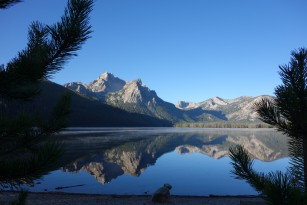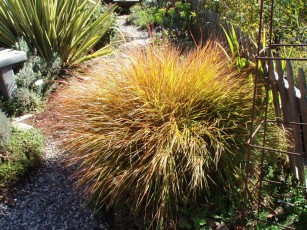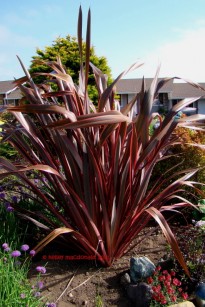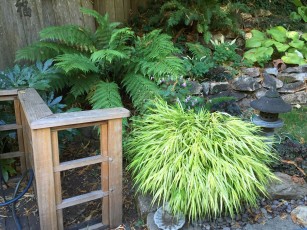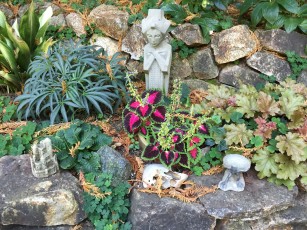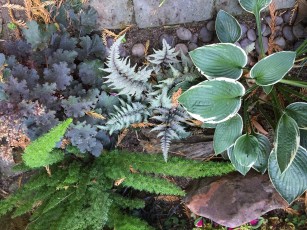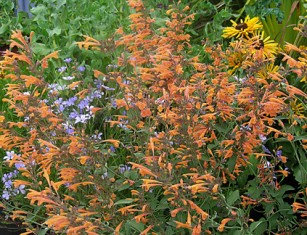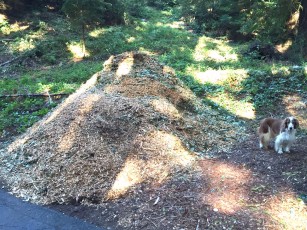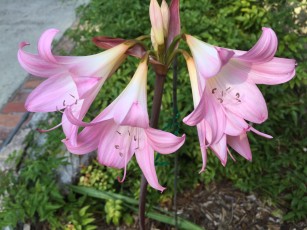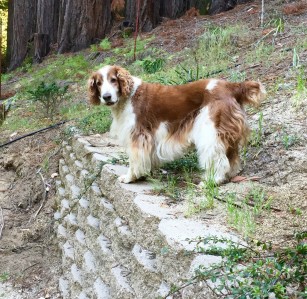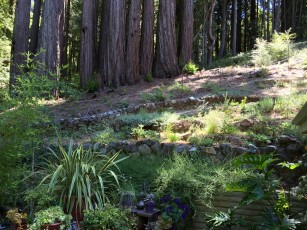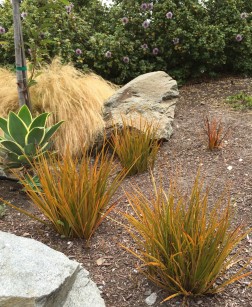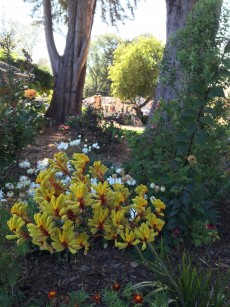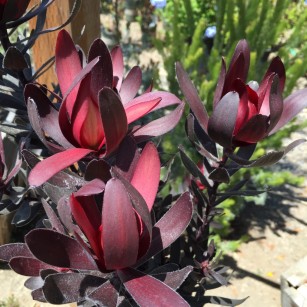
I?m starting to see a little fall color showing in some trees and shrubs. Might not be much but I?m always optimistic about such events. When I was in Wyoming the aspen and maples were beginning to turn red and gold and shrubs with berries acted like bird magnets. During this fall planting season look again at where a low water use plant that colors or fruits in the fall might be a great addition to your garden.
What causes those fabulous fall colors? The colors are always there. They are just masked by the green chlorophyll in the leaves busy making food by photosynthesis while the sun shines.
Come autumn, shorter days and cooler temperatures cause the trees to switch into energy-storage mode, at which point their leaves stop producing chlorophyll. For the few weeks before the leave fall to the ground, they are colored only by their natural pigments. It’s these colors – red and purple anthocyanins, yellow and orange carotenoids – that make fall foliage so glorious, sometimes anyway.
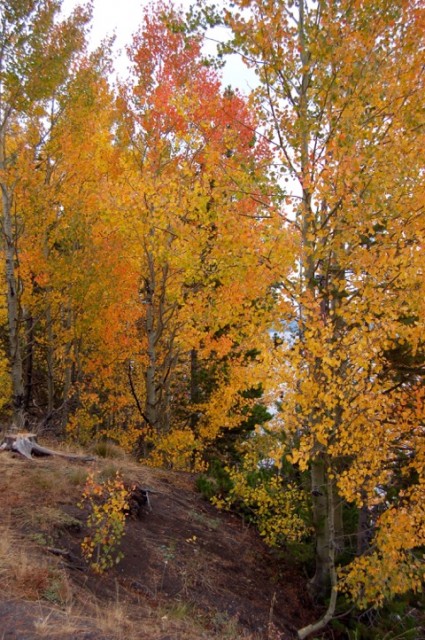
Weather conditions also play a major part in fall color. Some years the show is more dramatic than others. The best conditions for intense leaf color to develop are dry sunny days followed by cool -but not freezing – nights.
A warm, wet autumn will almost surely result in less-than-spectacular foliage because the process of chlorophyll loss will be less consistent. Freezing temperature meanwhile can cause leaves to drop suddenly denying the opportunity to enter a slow, colorful dormancy.
This year because many trees are stressed by drought they may not put on their usual show before the leaves drop. I have some native big leaf maples that are probably not going to turn color before leaf drop. Stress can be caused by pests, disease, injury or drought.
California native Western redbud turns yellow or red in the fall if conditions allow. This plant is truly a four-season plant starting in spring with magenta flowers, then leafing out with apple green heart shaped leaves. Colorful seed pods give way to fall color. This small native tree or large shrub does well as a patio tree in gardens with good drainage.
Other native plants like Spicebush and Western azalea turn yellow or gold in the fall. A native vine that lights up with the onset of autumn is Rogers Red California grape. If you have an arbor, wall or fence that needs covering quickly this is your plant. The green and gray leaves are transformed in autumn into great draperies of rich, scarlet red leaves with clusters of summer fruit turning all shades of purple.
Other low water use trees and shrubs that provide fall color include Chinese flame tree, Idaho locust, Chinese Tallow, Chinese pistache, Crape Myrtle and Smoke tree.
A great tree for the gardener interested in edibles is the Fuyu persimmon. This beautiful small tree is ornamental with glossy green leaves and also offers a dramatic fall display in shades of yellow, orange and red. Bright orange fruit begins to develop in late October and clings to bare branches usually through December. The tree looks more like it’s covered with holiday ornaments than fruit. And have you priced persimmons in the store lately?
Blueberries are a must for the edible gardener. They make a beautiful hedge and provide showy red or yellow fall color. Because of our colder winters here in the mountains, we can grow both northern highbush which are self-fertile and southern highbush which produce better with another type to pollinize them. They can be great foundation plants around the home as well as in the garden. Blueberries are low maintenance. Just a light pruning once a year after the season?s harvest and the shrubs will maintain a tidy appearance. Most are pest and disease resistant and since they don?t have thorns, they are child and pet-friendly.
Now through late fall is a good time to shop for trees that change colors because you can see in person just what shade of crimson, orange, scarlet or gold they will be.

